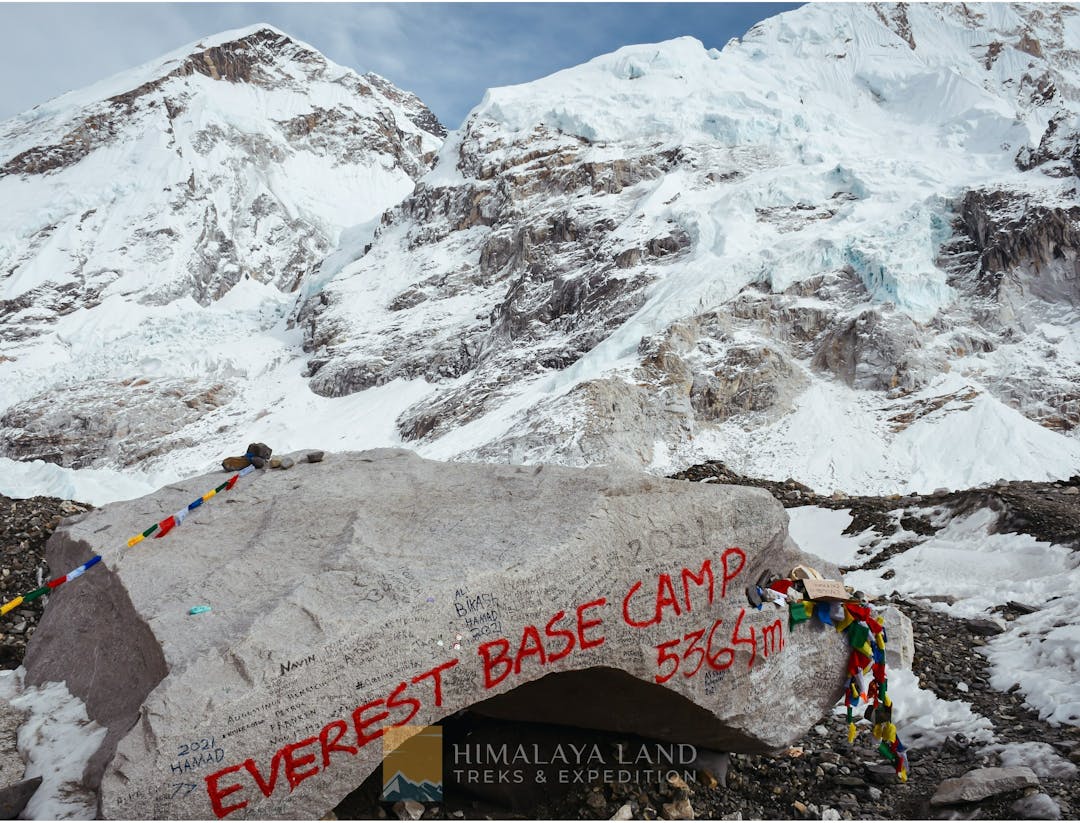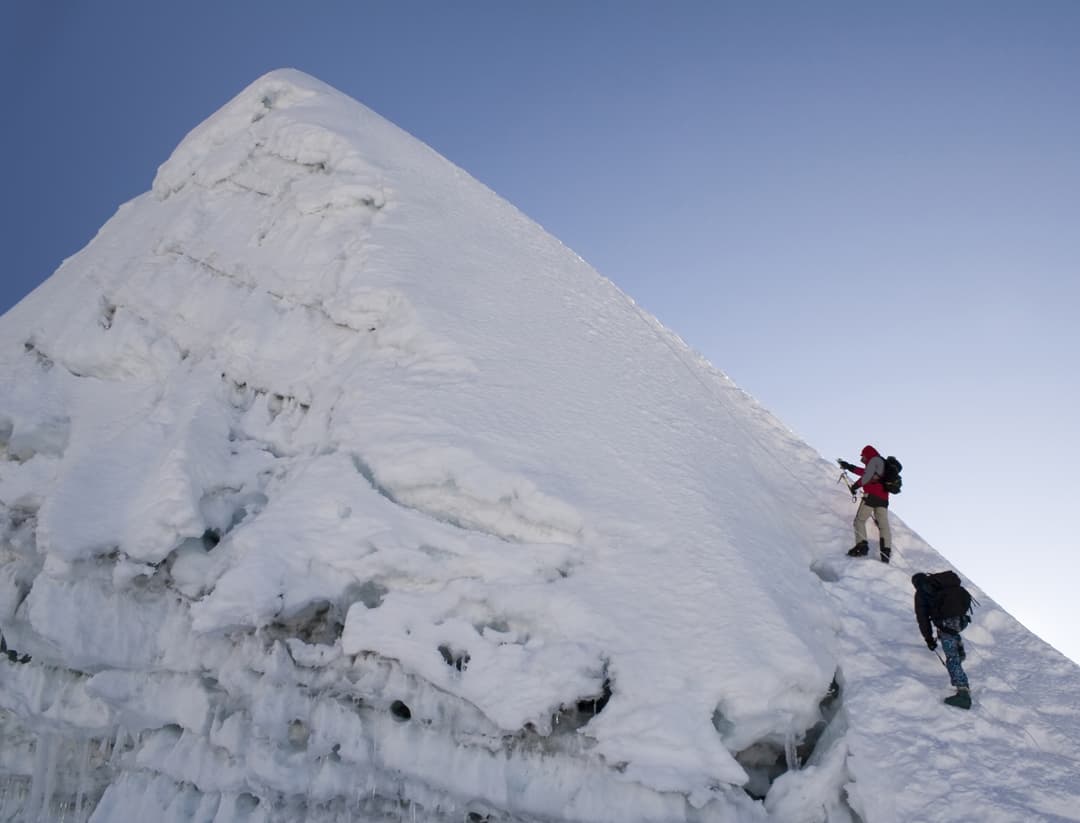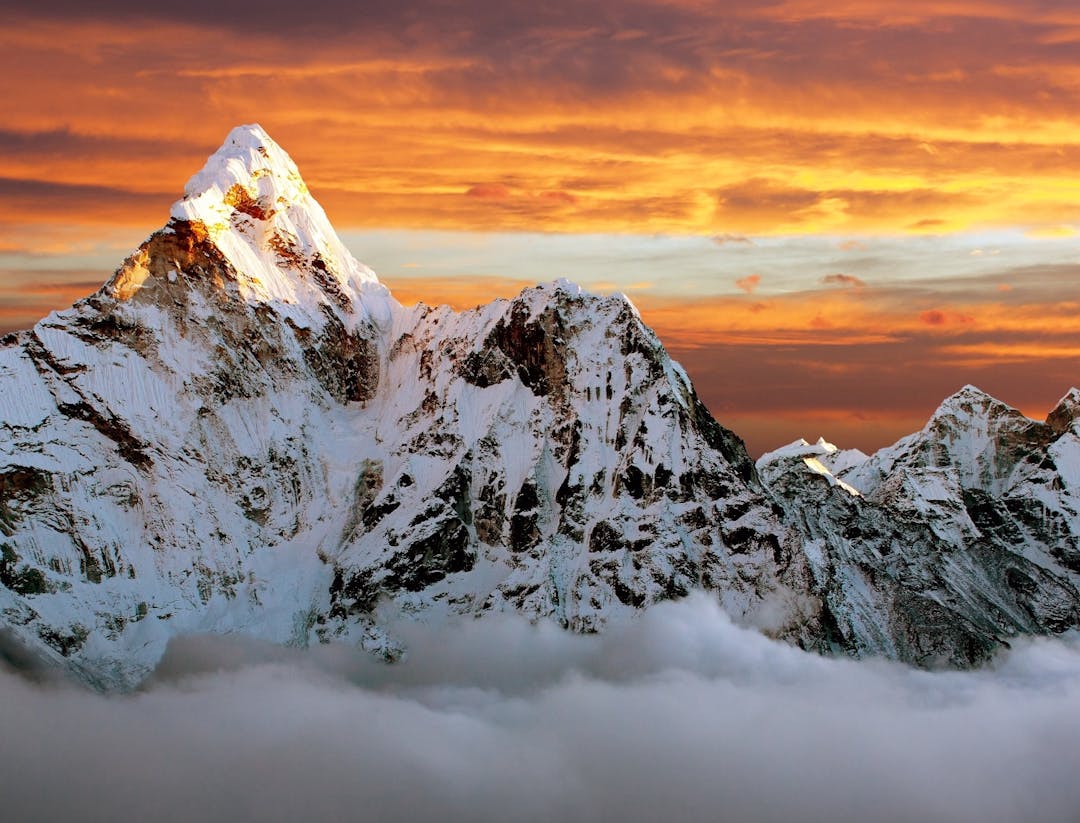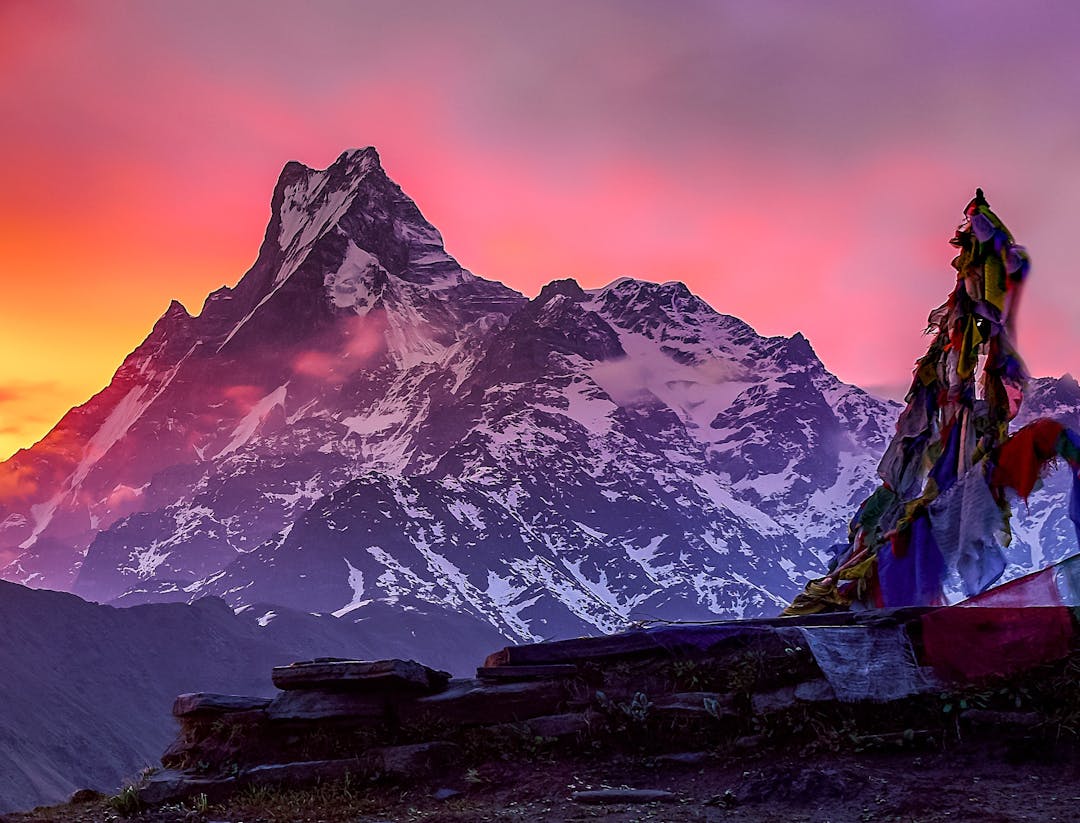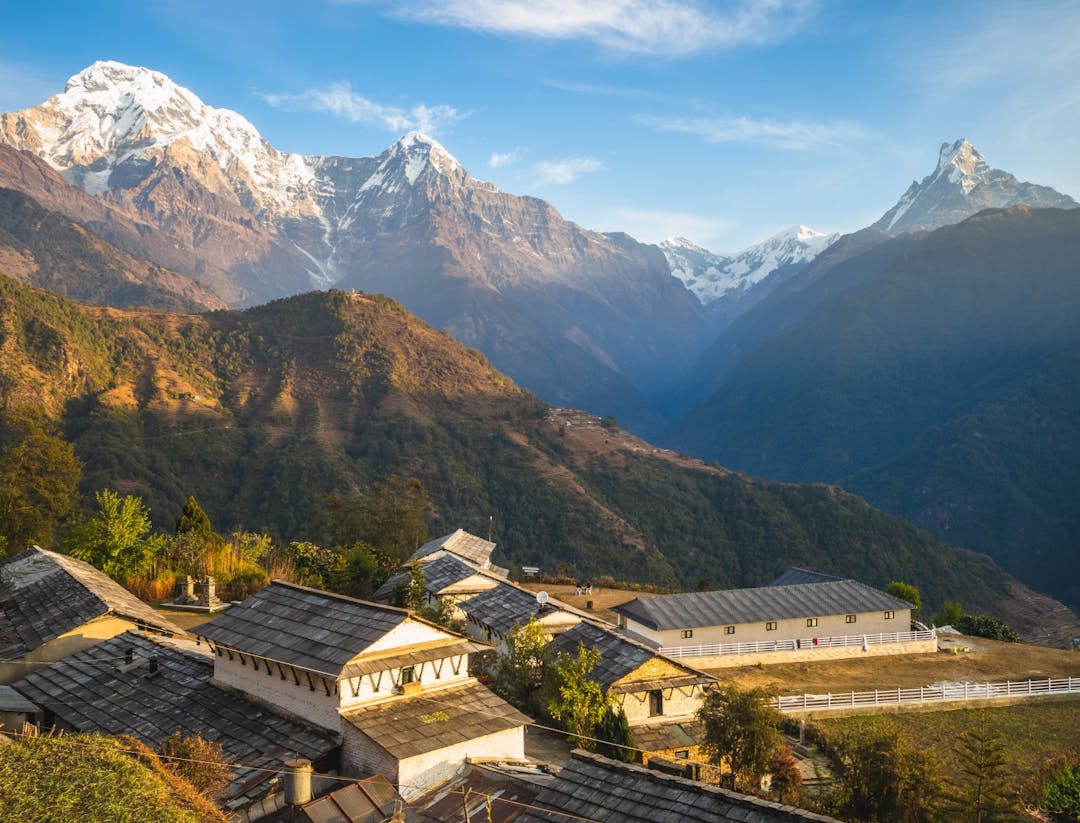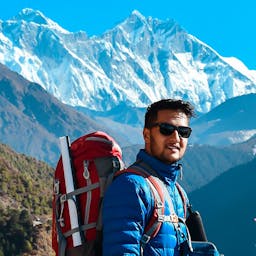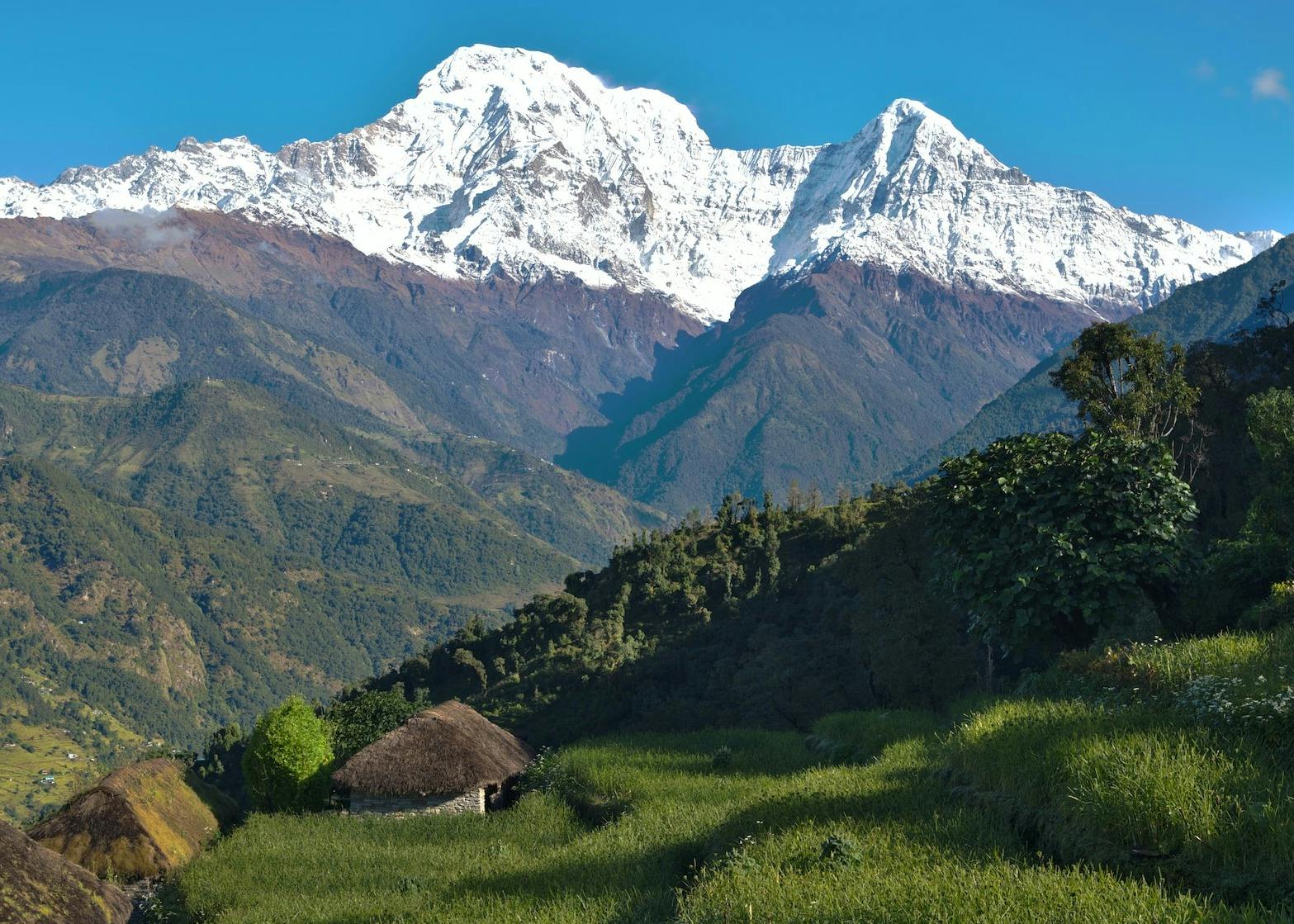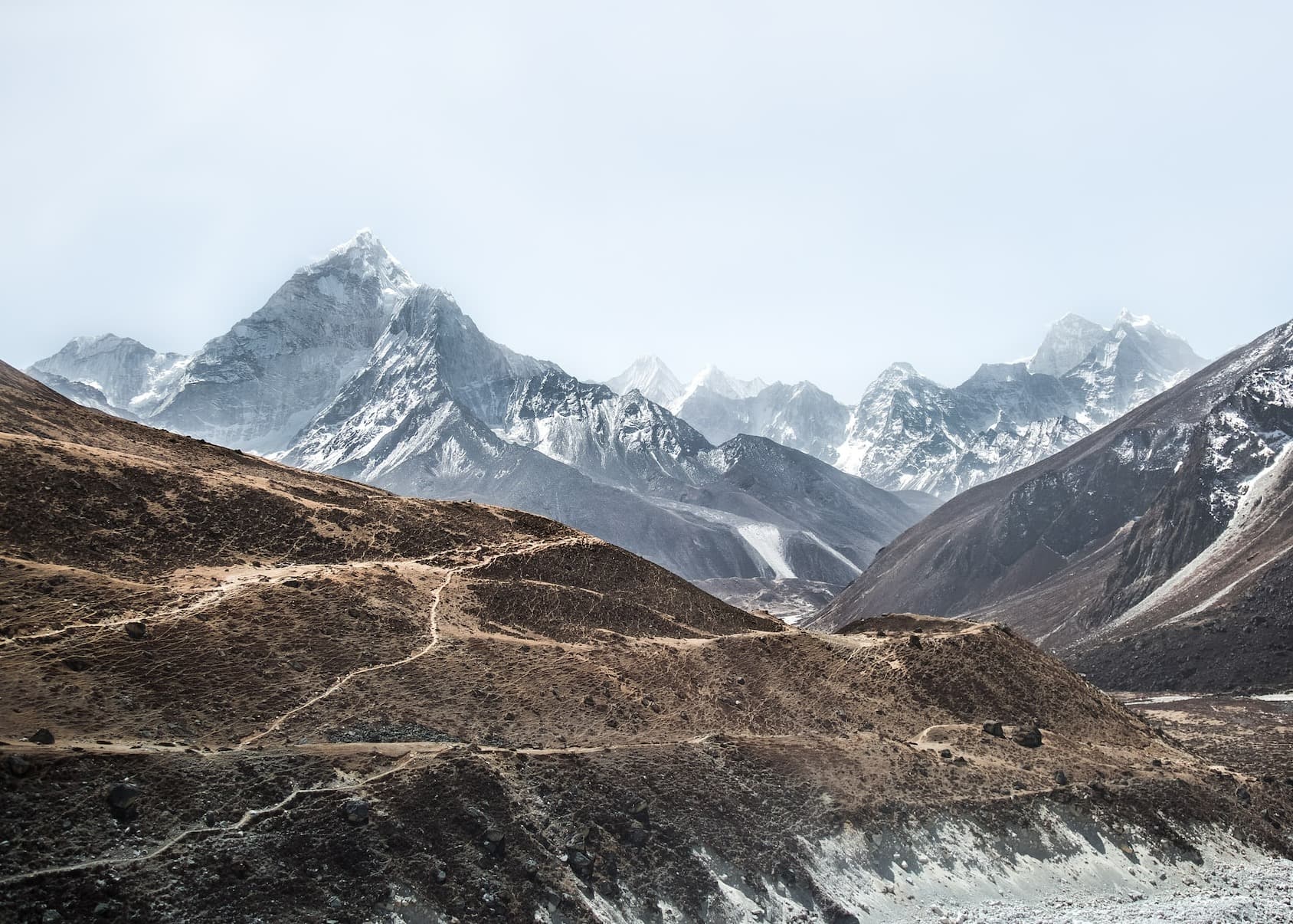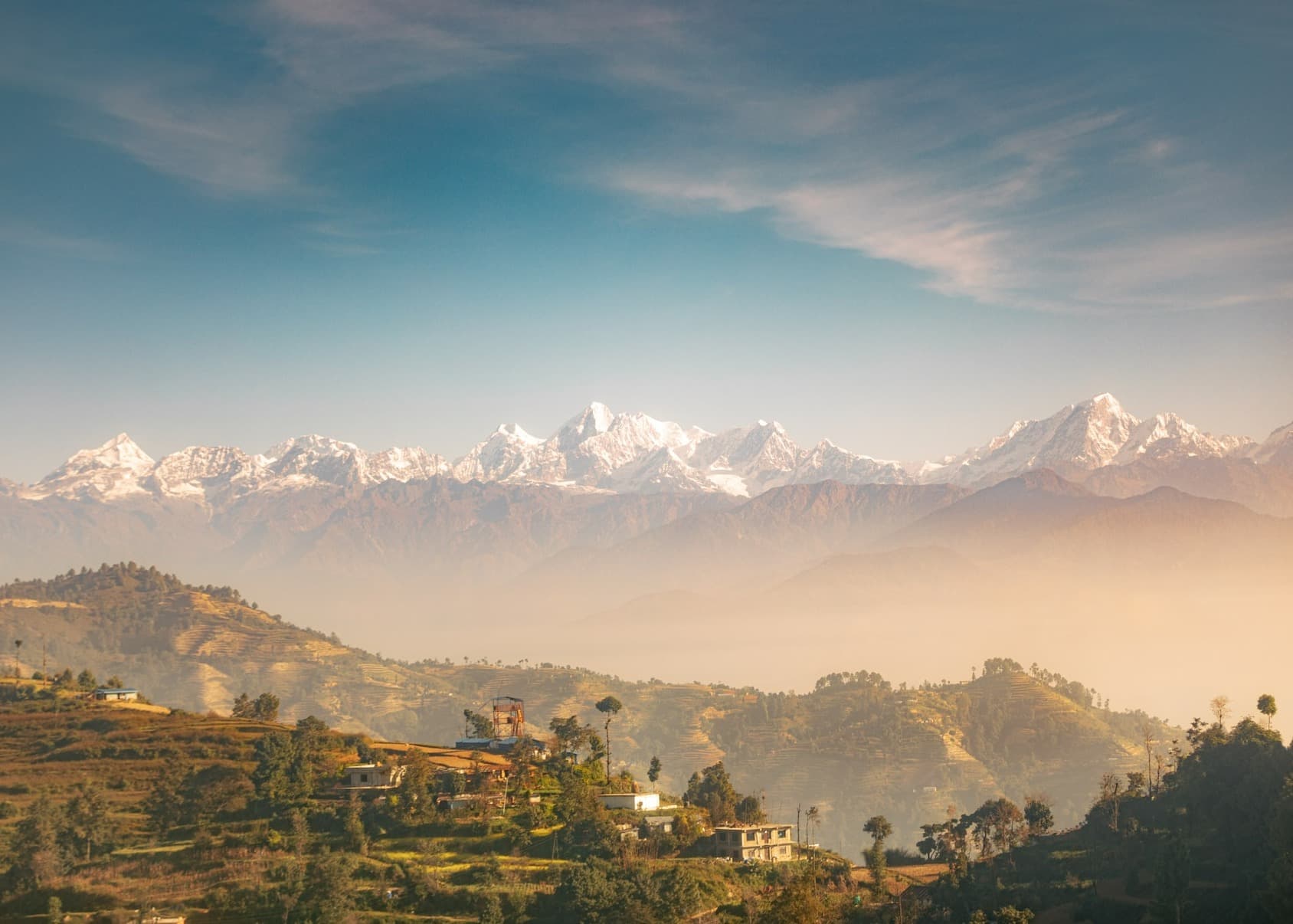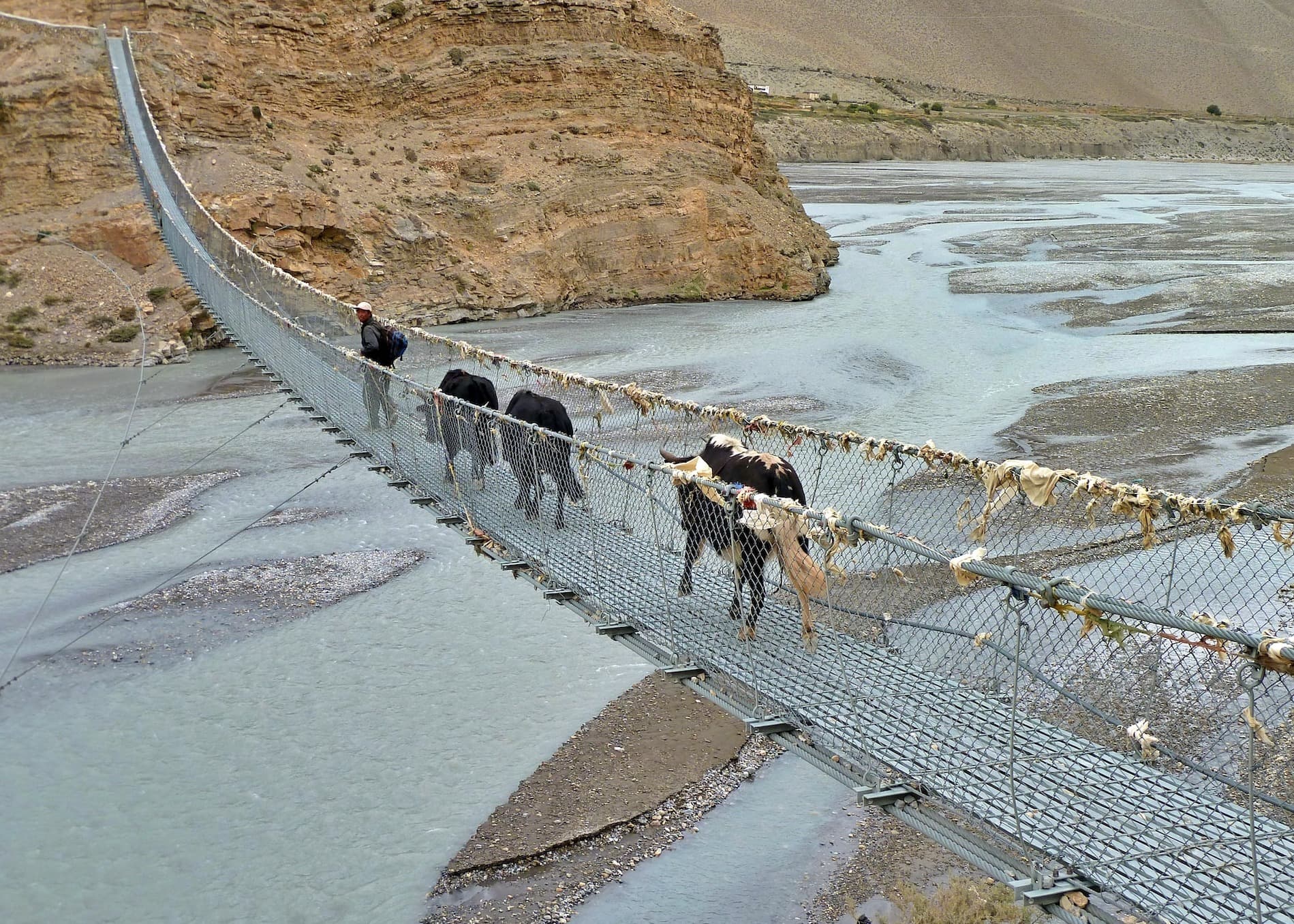- Why Upper Mustang Trek?
- What is the best time for Upper Mustang Trek?
- Upper Mustang Trek: Distance Covered and Route Overview
- Upper Mustang Trek cost breakdown
- Day-to-Day Itinerary for Upper Mustang Trek
- Can I do the Upper Mustang Trek solo?
- Upper Mustang Trek: Is it Suitable for Beginner Trekkers?
- Are permits required for the Upper Mustang Trek?
- Is acclimatization necessary during the Upper Mustang Trek?
- How to Book Upper Mustang Trek?
The Upper Mustang Trek offers a unique opportunity to explore the hidden treasures of the "Forbidden Kingdom." With its ancient Buddhist culture, arid landscapes, and stunning Himalayan vistas, this journey takes you back in time. The trail winds through remote valleys, barren deserts, and dramatic cliffs, revealing the rich cultural heritage and awe-inspiring natural beauty of the region.
As you traverse the ancient trade route, you will encounter medieval villages with traditional mud-brick houses, intricate monasteries adorned with colorful prayer flags, and the iconic Lo Manthang, the capital of Mustang. The region's isolation and limited access have preserved its unique culture, and the warm hospitality of the locals adds to the charm of the trek.
Why Upper Mustang Trek?
One of the primary reasons to choose this trek is the opportunity to experience a unique and preserved Tibetan-influenced culture. The region's ancient monasteries, traditional festivals, and warm hospitality of the locals provide a fascinating cultural experience.
Moreover, the trek takes you through diverse and breathtaking landscapes. From the lush greenery of the Kali Gandaki Valley to the arid desert-like terrain of Upper Mustang, you'll witness dramatic cliffs, wind-carved rock formations, and eroded canyons that create surreal and captivating scenery. The panoramic views of snow-capped peaks like Nilgiri, Annapurna, and Dhaulagiri further enhance the trek's appeal.
The sense of adventure is heightened by the region's restricted status until 1992, which has preserved its authenticity and kept it relatively untouched by mass tourism. As a result, you can enjoy an off-the-beaten-path experience, traversing remote valleys, encountering traditional Mustangi villages, and relishing the tranquility and serenity of the surroundings.
The trek also offers a fascinating opportunity to explore the mysterious caves of Upper Mustang. These ancient caves house Buddhist murals, intricate carvings, and historical artifacts, providing a glimpse into the region's history and spirituality. The cave exploration adds an element of discovery and intrigue to the journey.
What is the best time for Upper Mustang Trek?
The best time to embark on the Upper Mustang Trek is during the spring (March to May) and autumn (September to November) seasons. During these periods, the weather is generally stable, with clear skies and moderate temperatures. The spring season offers vibrant rhododendron blooms, while autumn showcases breathtaking mountain views. It's advisable to avoid the monsoon season (June to August) due to heavy rainfall and slippery trails.
If you wish to witness the Tiji Festival, a unique and culturally significant event in Upper Mustang, it is usually held in the month of May. The festival celebrates the victory of good over evil and is marked by vibrant mask dances, rituals, and ceremonies performed by the monks of Lo Manthang. Attending the Tiji Festival adds an extra dimension to your trek, allowing you to witness and immerse yourself in the local cultural festivities.
- Tea Houses/Lodges: Along the trekking route, you will find tea houses or lodges that offer accommodation and meals. These are typically family-run establishments that provide simple rooms with twin beds or bunk beds. The rooms may have shared bathroom facilities with running water, although hot water for showers may be limited or available at an additional cost.
- Sleeping Bags: It is advisable to carry your own sleeping bag, as the provided blankets in tea houses may not always be sufficient to keep you warm, especially at higher altitudes. A good quality sleeping bag suitable for colder temperatures is recommended.
- Dining Halls: Tea houses have communal dining halls where you can enjoy your meals. The menus generally offer a variety of local and international dishes, including Dal Bhat (a traditional Nepali meal), soups, noodles, and snacks. Keep in mind that the availability of food items may be limited, especially in more remote areas.
- Electricity and Charging Facilities: Most tea houses have limited electricity supply, often generated by solar power or small generators. This means that electrical outlets for charging electronic devices may be available, but it is advisable to carry a portable power bank or extra batteries as a backup.
- Wi-Fi and Communication: Wi-Fi and mobile network coverage are limited in Upper Mustang. While some tea houses may offer Wi-Fi for a fee, the connection speed may be slow and unreliable. It is recommended to inform your loved ones in advance about limited communication during the trek.
- Altitude Considerations: As you ascend to higher altitudes, the facilities may become more basic. It is important to be prepared for limited amenities, and to adjust your expectations accordingly.
Upper Mustang Trek: Distance Covered and Route Overview
The trek typically starts from Jomsom, a popular gateway to the Mustang region. From Jomsom, trekkers begin their adventure by walking to Kagbeni, covering an approximate distance of 10 kilometers (6.2 miles). Kagbeni is a charming village situated at the confluence of the Kali Gandaki and Mustang rivers.
Continuing the journey, trekkers traverse through ancient Tibetan-influenced villages and rugged terrains, trekking from Kagbeni to Chele. This section covers a distance of about 14 kilometers (8.7 miles). Chele is nestled at an elevation of 3,050 meters (10,006 feet), offering stunning views of the surrounding landscapes.
The next leg of the trek takes trekkers from Chele to Ghiling, covering approximately 15 kilometers (9.3 miles). Ghiling, situated at an altitude of 3,440 meters (11,286 feet), treats trekkers with its unique cultural experiences and picturesque landscapes.
From Ghiling, the trek continues to Charang, covering a distance of around 14 kilometers (8.7 miles). Charang is known for its ancient monasteries and the red-walled dzong, providing insights into the rich cultural heritage of the region.
The journey then leads to the fabled walled city of Lo-Manthang, covering a distance of approximately 16 kilometers (9.9 miles). Lo-Manthang, situated at an altitude of 3,730 meters (12,237 feet), is the capital of Upper Mustang and offers a remarkable cultural experience with its monasteries, ancient palaces, and unique Tibetan architecture.
After spending time exploring Lo-Manthang, the trek retraces its steps back to Dhakmar, covering a distance of about 14 kilometers (8.7 miles). Dhakmar is famous for its vibrant red cliffs and unique landscapes.
The return journey continues from Dhakmar to Ghiling, covering approximately 4 kilometers (2.5 miles), and then further to Chhuksang, covering an additional 15 kilometers (9.3 miles). Chhuksang marks the final stretch of the Upper Mustang Trek before reaching Jomsom.
The trek concludes with a final leg from Chhuksang to Jomsom, covering around 14 kilometers (8.7 miles). Jomsom, situated at an elevation of 2,710 meters (8,891 feet), offers a comforting sense of accomplishment as trekkers prepare to depart from the enchanting Mustang region.
On average, the trek spans approximately 160 kilometers (100 miles). It's important to note that the trekking distances per day may vary, with some days requiring longer hours of walking due to the availability of accommodation and the terrain.
Upper Mustang Trek cost breakdown
For a single person: The cost is US$ 1899. This means that if you are planning to trek alone, you would need to pay this amount.
For a group of 2 to 4 people: The cost is US$ 1820 per person. If you are trekking with a small group of 2 to 4 individuals, each person would need to pay this amount.
For a group of 5 to 8 people: The cost is US$ 1780 per person. If you have a slightly larger group of 5 to 8 individuals, each person would need to pay this amount.
For a group of 9 to 15 people: The cost is US$ 1680 per person. If you have a larger group of 9 to 15 individuals, each person will need to pay this amount.
These prices include certain services such as permits, guides, accommodation, meals, and transportation during the trek.
Day-to-Day Itinerary for Upper Mustang Trek
- Day 1: Arrival at Kathmandu (1,320m/4,330ft) - Upon your arrival in Kathmandu, you will be welcomed by our representative and transferred to your hotel. Take the day to rest and explore the vibrant city.
- Day 2: Kathmandu Sightseeing and Trek Preparation - Enjoy a guided tour of the cultural and historical sites in Kathmandu, including UNESCO World Heritage Sites. Prepare for the trek and make any necessary arrangements.
- Day 3: Drive from Kathmandu to Pokhara (820m/2,690ft) - Take a scenic drive from Kathmandu to Pokhara, a beautiful lakeside city. Enjoy the views of the countryside and relax in Pokhara.
- Day 4: Fly to Jomsom and Trek to Kagbeni (2,710m/8,891ft) - Take a short scenic flight to Jomsom and begin your trek to Kagbeni. Walk along the Kali Gandaki River and explore the ancient village of Kagbeni.
- Day 5: Trek from Kagbeni to Chele (3,050m/10,006ft) - Ascend from Kagbeni through arid landscapes and Tibetan-influenced villages. Reach the village of Chele and enjoy the stunning views of the surrounding hills.
- Day 6: Trek from Chele to Ghiling (3,440m/11,286ft) - Continue trekking through a narrow canyon, cross several passes, and descend to the village of Ghiling. Experience the unique cultural blend of Tibetan Buddhism and Bon religion.
- Day 7: Trek from Ghiling to Charang (3,490m/11,450ft) - Pass through small settlements, cross the Ghami La pass, and descend to Charang. Explore the ancient monasteries and visit the red-walled dzong.
- Day 8: Trek from Charang to Lo-Manthang (3,730m/12,237ft) - Trek to Lo-Manthang, the capital of the Upper Mustang region. Marvel at the ancient Tibetan culture, visit monasteries, and explore the walled city.
- Day 9: Explore day at Lo-Manthang (3,730m/12,237ft) - Spend a day exploring the enchanting city of Lo-Manthang. Visit monasteries, interact with locals, and immerse yourself in the rich cultural heritage.
- Day 10: Trek from Lo-Manthang to Drakmar (3,810m/12,500ft) - Begin your return journey as you trek from Lo-Manthang to Drakmar. Traverse through high passes, barren landscapes, and unique rock formations.
- Day 11: Trek from Drakmar to Ghiling (3,806m/12,484ft) - Continue descending through the trail, passing through scenic valleys and ancient settlements. Return to Ghiling and rest for the night.
- Day 12: Trek from Ghiling to Chhuksang (3,050m/10,004ft) - Follow the trail back to Chhuksang, crossing the Kali Gandaki River. Enjoy the picturesque landscapes and reflect on the trekking experience.
- Day 13: Trek from Chhuksang to Jomsom (2,710m/8,891ft) - Walk back to Jomsom, enjoying the final leg of the trek. Say goodbye to the rugged terrain and celebrate the completion of the trek.
- Day 14: Fly from Jomsom to Pokhara (820m/2,690ft) - Take a scenic flight from Jomsom to Pokhara. Relax and unwind in the lakeside city, enjoying the serene surroundings.
- Day 15: Drive from Pokhara to Kathmandu | Farewell Dinner - Travel back to Kathmandu by road, enjoying the countryside views. In the evening, join a farewell dinner to celebrate the successful completion of the Upper Mustang Trek.
Can I do the Upper Mustang Trek solo?
No, trekking independently in Upper Mustang is not allowed. Trekkers must be accompanied by a licensed guide and travel with a registered trekking agency. Due to the remote nature of the region, it's recommended to trek with a guide or join a group.
A guide will provide valuable assistance, ensure your safety, and navigate through challenging terrains. Additionally, trekking with a group allows you to share the experience with fellow trekkers and creates a sense of fellowship.
Upper Mustang Trek: Is it Suitable for Beginner Trekkers?
Yes, the Upper Mustang Trek is considered suitable for beginner trekkers. While it is important to note that trekking experience and physical fitness are advantageous for any trek, the Upper Mustang Trek can be manageable for beginners with proper preparation and guidance.
Here are a few reasons why it is considered suitable:
Moderate Difficulty Level: The Upper Mustang Trek is rated as moderately challenging, making it accessible for beginners who are willing to put in the effort. The trails are well-defined, and the terrain is generally not as rugged as some other treks in the region.
Well-Established Trekking Route: The trek follows a well-established route with teahouses and guesthouses available along the way. This ensures that beginner trekkers have access to accommodations, meals, and support throughout the journey.
Trekking Support: It is recommended for beginners to hire a local guide or join a trekking group. A knowledgeable guide can provide valuable assistance, navigation, and insights into the local culture, enhancing the overall trekking experience.
Gradual Acclimatization: The Upper Mustang Trek itinerary allows for gradual acclimatization to the high altitude. This is important for beginners to adjust to the changing altitude and minimize the risk of altitude sickness.
Cultural Immersion: The Upper Mustang region offers a unique cultural experience, with its Tibetan-influenced traditions, ancient monasteries, and distinctive architecture. This aspect of the trek can be enjoyed by trekkers of all experience levels, including beginners.
Are permits required for the Upper Mustang Trek?
Yes, permits are required for the Upper Mustang Trek. Every person entering the Annapurna Conservation Area Project (ACAP) area needs to obtain an entry permit, which costs $20 per person for a single entry into the area. The permit remains valid for the duration of the trek, allowing trekkers to stay in the ACAP area for as long as the trek takes.
In addition to the ACAP entry permit, trekkers planning to go into Upper Mustang (from Kagbeni onwards) require a Restricted Area Permit (RAP). RAP costs $500 per person for a duration of 10 days. If trekkers wish to extend their stay beyond 10 days, an additional charge of $50 per day is applied.
Is acclimatization necessary during the Upper Mustang Trek?
Yes, acclimatization is necessary during the Upper Mustang Trek. Acclimatization refers to the process of allowing your body to adjust to the high altitude gradually. The Upper Mustang region is situated at a considerable elevation, with some parts reaching over 3,800 meters (12,500 feet). The rapid gain in altitude can pose risks of altitude sickness if proper acclimatization is not observed.
Taking rest days and acclimatization breaks during the trek allows your body to adapt to the reduced oxygen levels at higher altitudes. This helps minimize the chances of altitude-related illnesses, such as acute mountain sickness (AMS), and ensures a safer and more enjoyable trekking experience.
Typically, during the Upper Mustang Trek, acclimatization breaks are scheduled at strategic points along the route, such as Kagbeni, Chele, or Tsarang. These rest days give your body time to adjust to the altitude before ascending further. It is essential to listen to your body, hydrate properly, and follow the guidance of your trekking guide to ensure a successful and safe trek.
How to Book Upper Mustang Trek?
To book an Upper Mustang Trek, you can rely on the expertise and services of Himalaya Land Treks, a renowned trekking agency based in Nepal. We offer an excellent opportunity to explore the captivating region of Upper Mustang.
Begin by researching and gathering information about the Upper Mustang trek, including permits, weather conditions, and trekking routes. Once you have a clear understanding, contact us through our website, email, or phone to inquire about availability and itinerary options. Our dedicated team will assist you in customizing the trek according to your preferences, duration, and any additional services required.
With our expertise, we will guide you through the process of obtaining necessary permits, including the Restricted Area Permit for Upper Mustang
The Upper Mustang Trek in Nepal offers a once-in-a-lifetime adventure filled with stunning landscapes, ancient culture, and warm hospitality. From the remote kingdom of Lo-Manthang to the challenging terrains, every step of this trek is a feast for the senses. Whether you choose to embark on this journey solo or with a group, the Upper Mustang Trek promises unforgettable memories and a deep connection with nature and tradition.


